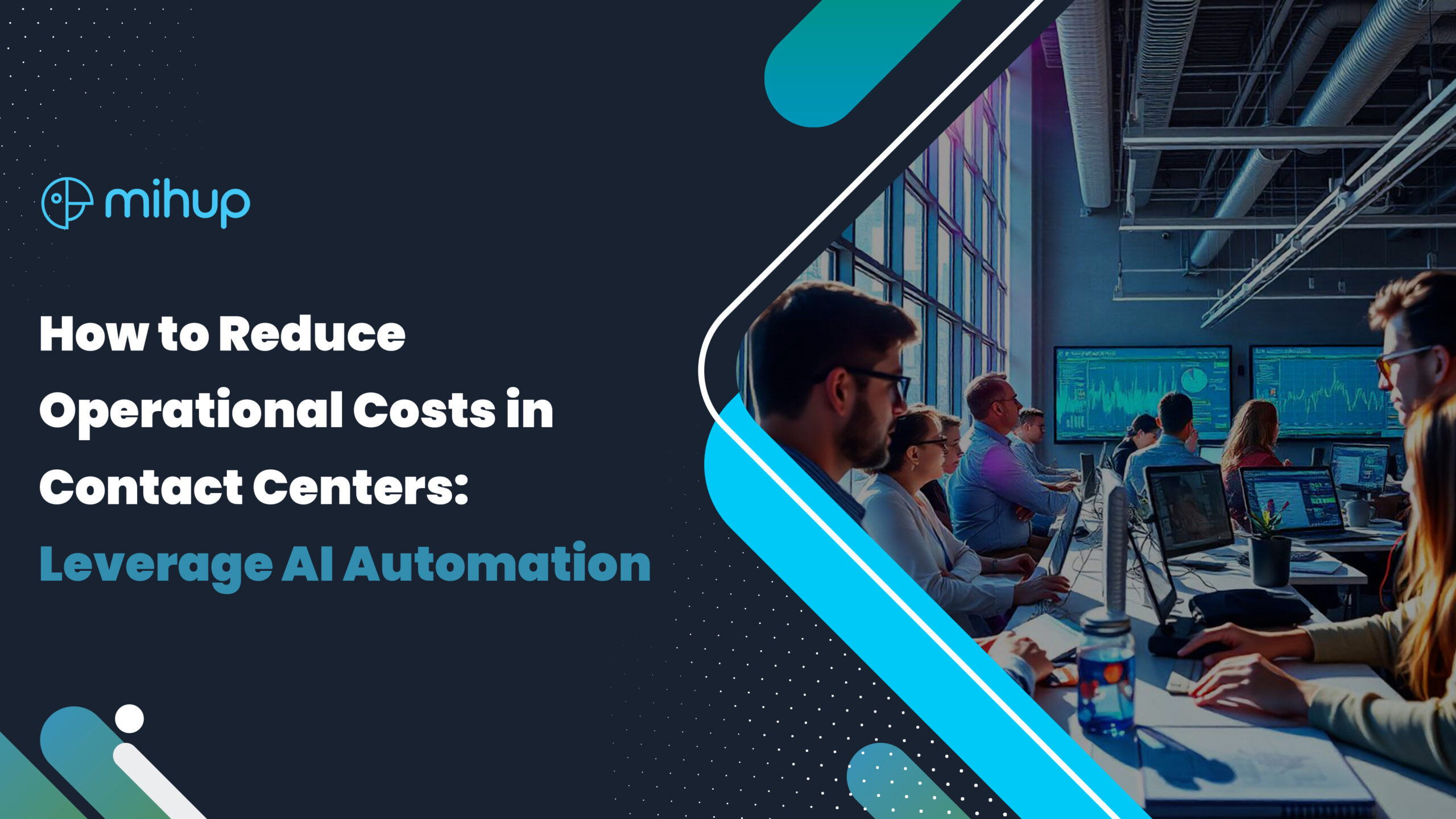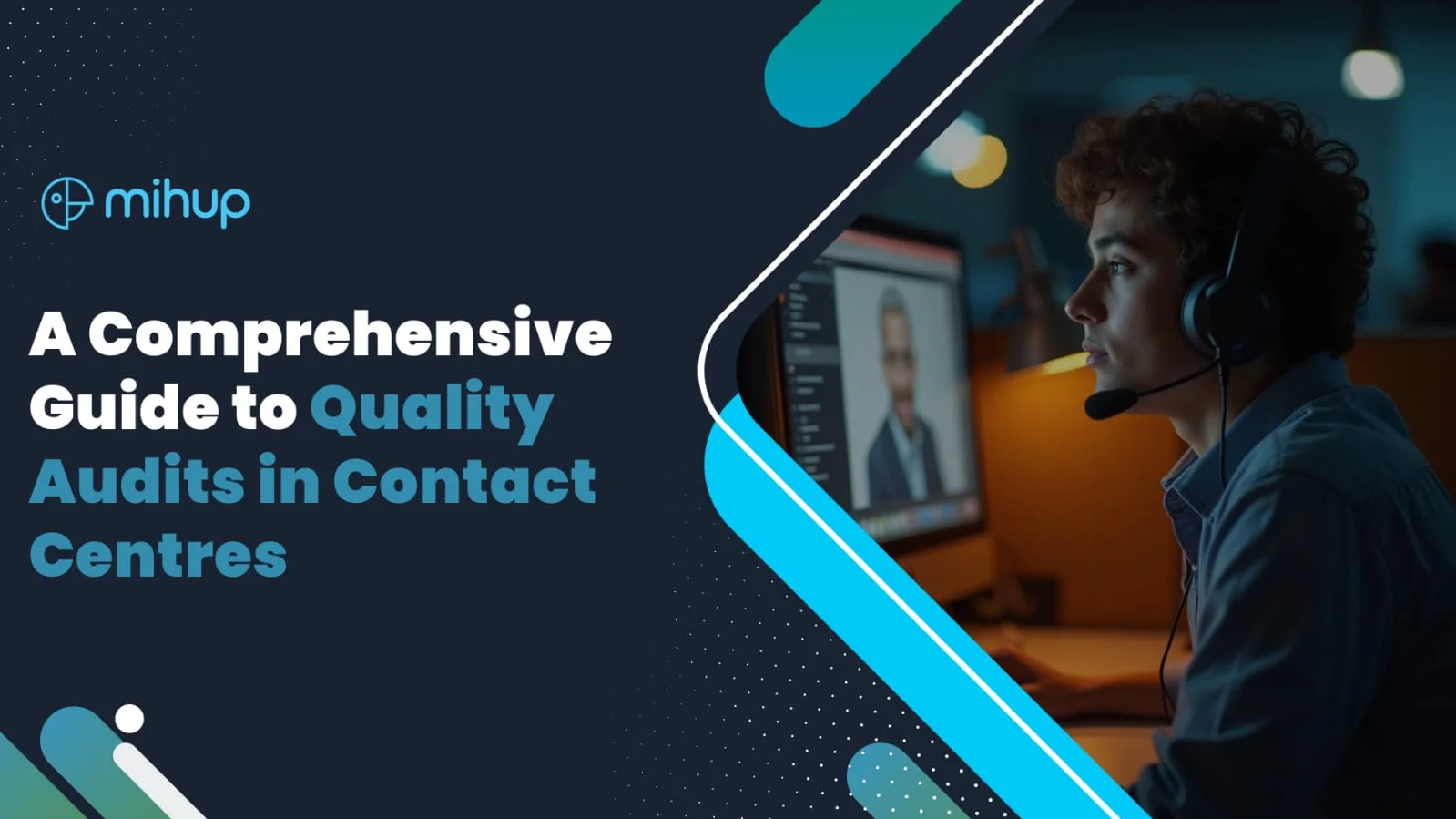If you think running a contact center is an easy task, then think again! Because running a contact center can cost an arm and a leg. For example, a healthcare call center’s average annual operating cost is around $13.9 million, and labor costs cost $6 million (43%). The increasing cost of running these centers makes companies look for innovative solutions.
Therefore, one of the newest game-changing technologies — AI- ensures streamlined operations at reduced costs and enhanced satisfaction. Traditional methods alone can be overwhelmed by all the pressures generated by ever-increasing customer demands and operational overheads.
This article explores, how AI can enhance contact centers while addressing common challenges resulting in overall outcomes for customers and employees.
Factors Affecting the Increase in Contact Center Costs
If I told you that you could gain more without losing much, would you believe me? The key is simple—first understand the factors driving the increase in your contact center costs:
1. High Staff Turnover Rates: Contact centers often experience high employee turnover due to the demanding nature of the job. Employees face repetitive tasks, high-stress levels, and the challenge of meeting stringent performance metrics. This combination often leads to burnout. Replacing an agent can cost up to 20% of their annual salary, not to mention the loss of productivity during the transition. Beyond costs, high turnover disrupts service consistency, affecting customer satisfaction.
2. Rising Labor Costs: With wages and benefits on the rise, labor remains a significant portion of contact center expenses. Technology adoption can offset some expenses, but without AI, labor inefficiencies persist. For example, call center software costs approximately $120 per user per month, and hardware like phones and headsets adds to the expenses. When scaling operations, these costs escalate exponentially, forcing many organizations to operate with stretched budgets.
3. Inefficient Training and Onboarding: Traditional training methods are time-consuming and resource-intensive, delaying new agents’ readiness and affecting service quality. Each new hire requires weeks of preparation to handle even basic inquiries. These inefficiencies not only raise training costs but also delay the ROI of new employees.
4. Limited Scalability of Traditional Solutions: Scaling operations typically requires hiring more staff, which increases costs and logistical challenges. Traditional methods lack the flexibility to adapt to fluctuating demand, leading to either overstaffing during quiet periods or understaffing during peak times—both of which can be costly.
The Role of AI in Contact Centers
AI is revolutionizing contact centers by automating tasks, providing real-time insights, and enhancing customer interactions. Let’s take a closer look at some of the key benefits:
Enhanced Efficiency: Automating repetitive inquiries allows human agents to focus on complex customer issues, improving productivity and morale. AI tools can streamline workflows, reducing the time spent on mundane tasks and improving response times significantly.
Scalability: AI solutions can manage increased workloads without proportional increases in costs, enabling seamless scaling. Unlike traditional methods that require human hiring, AI systems can be rapidly deployed and scaled up or down as needed, providing unmatched flexibility.
24/7 Support: AI-powered virtual agents provide round-the-clock assistance, meeting customer expectations for immediate responses. With AI, businesses can cater to global customers operating in different time zones without needing a 24-hour staffing model.
Better Customer Experiences: AI analyzes customer data to offer personalized interactions, boosting satisfaction and loyalty. It predicts customer preferences and tailors responses to their needs, creating a seamless and pleasant experience.
For example, a leding credit card company has reported significant improvements in customer engagement and resolution times using AI automation. Businesses leveraging AI for personalized service have seen increases in Net Promoter Scores (NPS) and customer retention rates.
Source (Case study)
AI-Driven Cost Reduction Strategies
1. Training Optimization: Traditional training methods often involve weeks of classroom-style instruction, shadowing, and hands-on practice. These methods can be costly and inefficient. AI streamlines this process by offering:
2. Personalized Learning: AI creates tailored training programs based on each agent’s strengths and weaknesses, allowing for targeted skill development. By focusing on specific areas of improvement, agents become proficient faster.
3. Real-Time Feedback: AI tools provide immediate insights during live calls, helping agents improve on the spot. This approach eliminates the need for extensive post-call reviews and delayed feedback cycles.
4. Faster Onboarding: With AI, new agents can achieve readiness up to 70% faster than with traditional methods. This reduction in onboarding time significantly lowers training costs and accelerates operational efficiency.
5. Operational Efficiency: Contact centers handle numerous repetitive tasks, such as call routing, data entry, and follow-ups. AI-powered tools like robotic process automation (RPA) can take over these tasks, resulting in:
i) Reduced operational expenses by minimizing human intervention.
ii) Faster resolution times as AI systems optimize workflow prioritization.
iii) Improved agent focus on high-value interactions that require empathy and critical thinking.
6. Scalability with AI: As businesses grow, customer inquiries often increase exponentially. Hiring more agents to meet this demand can be expensive and unsustainable. AI offers a cost-effective alternative:
i) Virtual Agents: AI voice bots can handle multiple customer interactions simultaneously. They efficiently address routine inquiries, allowing human agents to focus on more complex issues.
ii) Dynamic Scaling: AI systems can adapt to spikes in call volumes without compromising service quality. This capability ensures consistent performance during seasonal peaks or unexpected surges.
7. Virtual Agents and Self-Service Automation
AI-powered virtual agents empower customers to resolve issues independently. Self-service tools not only save costs but also improve the customer experience by reducing dependency on live agents for routine tasks. Examples include:
i) FAQs and Account Updates: AI handles common queries, freeing up human agents for complex issues. Virtual agents can process thousands of similar inquiries simultaneously, maintaining accuracy and speed.
ii) Customer Portals: Self-service options like password resets or order tracking reduce ticket volume by up to 50%. These systems enhance customer autonomy and satisfaction by providing instant solutions.
8. Speech and Sentiment Analytics: AI analyzes customer interactions to gauge sentiment and detect patterns. Benefits include:
i) Identifying dissatisfied customers in real-time, allowing for timely intervention.
ii) Gaining insights to refine agent training and improve service quality.
iii) Understanding customer pain points to develop more effective solutions.
For example, Mihup’s interaction analytics tools have helped businesses achieve a 20% increase in customer satisfaction scores by addressing issues proactively. The ability to tap into customer sentiment provides invaluable insights for driving better experiences.
9. Monitoring Key Performance Indicators (KPIs): Organizations using AI to monitor KPIs often report significant improvements in operational efficiency and customer outcomes. These metrics serve as a foundation for continuous improvement. Tracking metrics such as First Contact Resolution (FCR), Average Handling Time (AHT), and Customer Satisfaction Scores (CSAT) is critical for contact center success. AI tools offer:
- Real-time tracking and reporting to provide actionable insights.
- Data-driven solutions to identify inefficiencies and implement corrective actions.
- Predictive analytics to anticipate and address potential issues before they escalate.
Outcomes of Implementing AI Solutions
Implementing AI in contact centers leads to measurable improvements, such as:
1. Reduced Operational Costs: Automating routine tasks decreases reliance on human resources, saving money. This reduction often translates into substantial annual savings for businesses with high call volumes.
2. Improved Customer Satisfaction: Faster response times and personalized interactions create a better customer experience. With AI, businesses can maintain consistent service quality even during high-demand periods.
3. Higher Agent Productivity: With routine tasks automated, agents can focus on complex issues, increasing efficiency and job satisfaction. This focus not only enhances performance but also reduces burnout, leading to better retention rates.
For instance, a financial services company reported a 40% reduction in operational costs and a 25% increase in customer satisfaction after implementing AI-powered virtual agents (AI Journal). These outcomes highlight the transformative potential of AI in modern contact centers.
Reduce Your Call Center Costs with Mihup.ai
Mihup.ai offers a suite of AI-driven solutions designed to streamline your contact center operations. Our tools include:
1. Interaction Analytics: Automate routine after-call tasks like call summaries, next follow-up actions, etc.., allowing human agents to focus on high-value tasks and reduce wait times.
2. Sentiment Analysis: Gain insights into customer emotions to improve interactions and proactively address dissatisfaction.
3. Real-Time Monitoring: Track KPIs like FCR, AHT, and CSAT to identify inefficiencies and improve performance.
With Mihup.ai, you can reduce operational costs, improve customer satisfaction, and scale your contact center seamlessly. Our proven solutions are designed to help you stay ahead of the competition in a rapidly evolving market.
Ready to transform your contact center?





